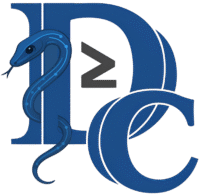Listen to this Post
How the Mentioned CVE Works:
CVE-2025-2133 is a medium-severity Cross-Site Scripting (XSS) vulnerability found in FTCMS version 2.1. The vulnerability resides in the `/admin/index.php/news/edit` file, specifically in the parameter. Attackers can exploit this flaw by injecting malicious scripts into the argument, which is then executed in the context of the victim’s browser. This allows for unauthorized actions, such as stealing session cookies or redirecting users to malicious sites. The attack is remotely exploitable, and while the vendor was notified, no patches or responses have been provided. Other parameters in the same file may also be vulnerable, increasing the attack surface.
DailyCVE Form:
Platform: FTCMS
Version: 2.1
Vulnerability: Cross-Site Scripting (XSS)
Severity: Medium
Date: 03/09/2025
What Undercode Say:
Exploitation:
1. Crafting the Payload:
Attackers can inject malicious JavaScript into the “ parameter. Example:
<script>alert('XSS');</script>
2. Remote Execution:
The payload is delivered via a crafted URL or form submission:
http://example.com/admin/index.php/news/edit?=<script>alert('XSS');</script>
3. Impact:
Successful exploitation can lead to session hijacking, phishing, or defacement.
Protection:
1. Input Sanitization:
Sanitize user inputs to prevent script injection. Example in PHP:
$ = htmlspecialchars($_GET[bash], ENT_QUOTES, 'UTF-8');
2. Content Security Policy (CSP):
Implement CSP headers to restrict script execution:
Content-Security-Policy: default-src 'self';
3. Output Encoding:
Encode outputs to neutralize malicious scripts:
echo htmlentities($, ENT_QUOTES, 'UTF-8');
4. Patch Management:
Regularly update software and apply vendor patches if available.
Analytics:
- CVSS Score: 4.8 (Medium)
- Attack Vector: Network (AV:N)
- Privileges Required: High (PR:H)
- User Interaction: Required (UI:P)
Commands:
1. Check for Vulnerable Versions:
grep -r "FTCMS 2.1" /var/www/html/
2. Test for XSS:
Use tools like `OWASP ZAP` or `Burp Suite` to test for XSS vulnerabilities.
Code Snippets:
1. Sanitization in PHP:
$ = filter_input(INPUT_GET, '', FILTER_SANITIZE_STRING);
2. CSP Header in Apache:
Header set Content-Security-Policy "default-src 'self';"
3. Log Monitoring:
Monitor logs for suspicious activity:
tail -f /var/log/apache2/access.log | grep "admin/index.php"
By following these steps, organizations can mitigate the risks associated with CVE-2025-2133 and protect their systems from XSS attacks.
References:
Reported By: https://nvd.nist.gov/vuln/detail/CVE-2025-2133
Extra Source Hub:
Undercode

